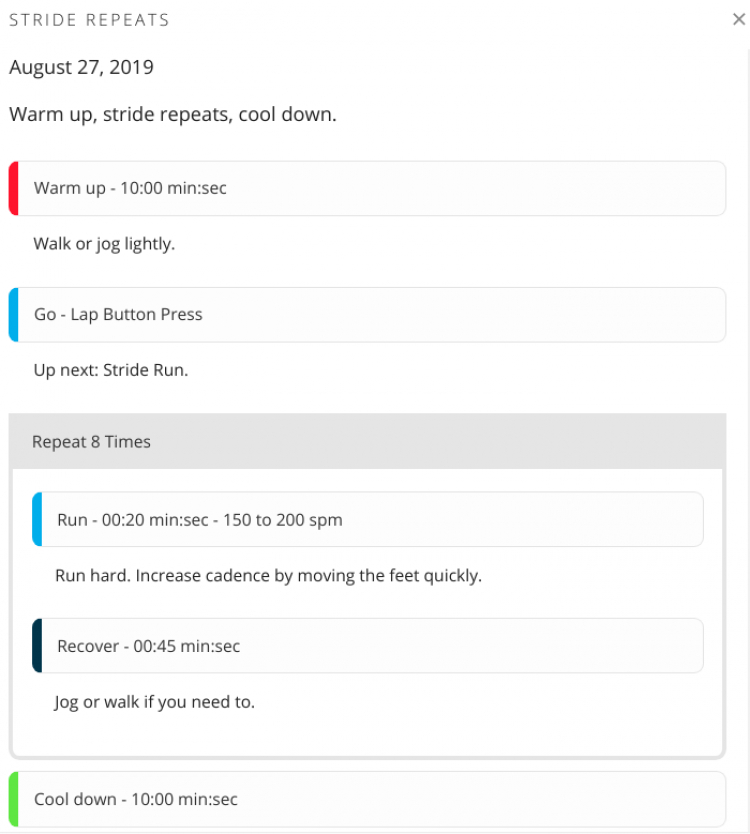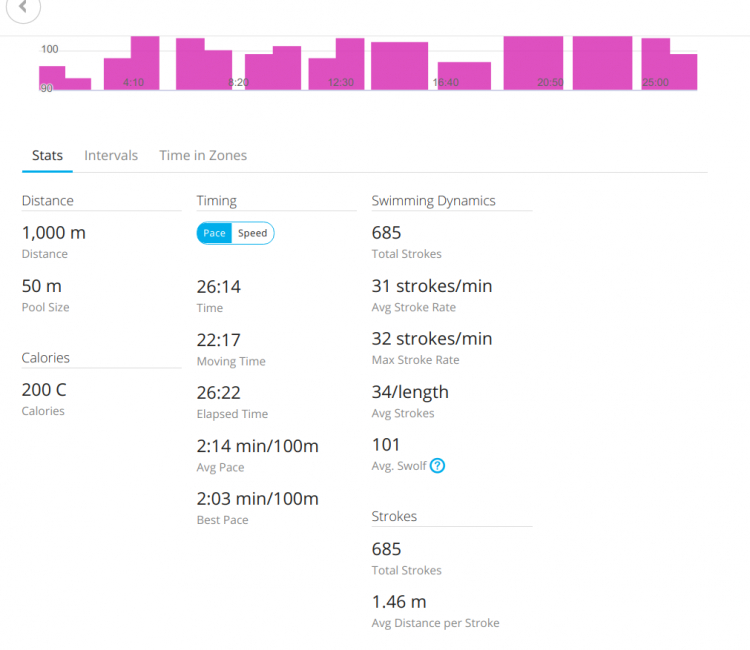Tóm vài dòng thì các vận động viên đỉnh cao đều tập chạy dài ở pace thấp cho cơ thể của họ thay vì chạy nhanh ở tốc độ caoChắc em phải tập giống vậy.
https://runnersconnect.net/wrong-long-run-pace/
Are You Sabotaging Your Long Run by Running the Wrong Pace?
The underlying principle of any training program, regardless of your goal or ability, should be the development of a solid aerobic base.
It’s the fundamental structure followed by almost every elite runner, in particular that of Kenyan athletes who spend around 85% of their time running at an ‘easy’ or ‘recovery’ pace.
Mo Farah reportedly runs around 120 miles per week, of which 80% at an easy pace. No doubt he and Galen Rupp are having a good old chat as they run up and down the hills in Boulder. Not the picture of hard elite training that you might imagine? Well, we can all learn from their approach.
Yet this is what most recreational runners get wrong. Running ‘easy’ doesn’t feel right (or hard enough), so they intuitively run at a ‘moderate’ pace, kidding themselves they’re running easy. Struggling to hold a conversation, a heavy sweat, and red face post run is a giveaway that you did not run ‘easy’!
Running at an easy pace – and by that I mean well into the aerobic zone around 70% of your maximum heart rate – is actually quite hard to do.
You have to slow down A LOT and it feels like you’re going nowhere. But it’s important to stick with it.
In time (usually just a few weeks), your body will adapt, your pace will quicken (for the same effort level) and you’ll have developed a super efficient fat burning engine. So, stick with me here…this is the bedrock of your future training.

Why running easy works
When I work with my beginner runners, we just focus on gradually increasing the length of time they can run for, and build up consistency of training – it’s simple and it works.
This is not the time to think about speed and pace, it is best to just get used to comfortable running where your body can adapt, stay healthy, and develop an efficient running rhythm.
Too many training plans out there have you doing speed intervals, tempo runs, and hills when you are just not ready. Of course it’s important to include a little of this ‘high end’ work, but a solid aerobic base is the fundamental foundation on which you’ll build everything else.
Regular aerobic training will train your body to utilize oxygen, preserve glycogen stores by using fat for fuel, and generally become more efficient.
However, I estimate that at least 75% of runners – of all abilities – run too fast too often, and end up in the ‘mid zone’; training neither the aerobic or anaerobic systems correctly.
Many coaches, myself included, recommend an overall balance of hard/easy training (whilst avoiding the moderate zone), a method now becoming known as ‘polarized training’. The avoidance of ‘moderate’ training is the key, and runners focus on ‘easy’ paced running for the majority of time, with a sprinkling of really hard work (where you really can’t chat!) mixed in for approx 20% of the weekly mileage.
Not only do you train a more efficient fat burning body, but the benefits mean you recover faster, and can therefore put in some harder efforts, rather than being chronically fatigued from ‘mid zone’ running’
Recent research from Dr Stephen Seiler et al from the University of Agdar, Norway, backs up this methodology; finding that high volume, low intensity training stimulates greater training effects for recreational runners, in particular when using the 80/20 split of easy/hard training.
A conclusion backed up by the 2014 Salzburg study published in the Frontiers of Physiology, found that the concept of ‘polarized’ training demonstrated the greatest improvements.
After a 9 week training period, runners using the 80/20 easy/hard split had improved their ‘time to exhaustion’ by a whopping 17.4% and change in peak speed by 5.1%.
This group had completed 68% of their training in the low intensity zone, and 24% at high intensity, with only 6% in the ‘moderate’ zone.
So what does that mean for you? How do you put this into practice?
In a world of high intensity training fads, advice to slow down might seem counterintuitive, but it works The key to running further, and ultimately faster is to slow down, especially for your long runs. Easy to say, but harder to do. If you take only one thing away from this article, it’s this – faster is NOT always better.
When you first start out running, you’re likely to have one pace. As you get more experienced and your fitness improves, you will need to develop a wider range of paces. Your long run or easy pace may be 90 seconds – three minutes slower than your ‘top end’ pace.
US Marathon Champion Esther Erb likes to make sure she takes her easy running seriously, “I see hard recovery runs as an indicator of insecurity. When it comes to recovery, it takes more confidence to run slowly than it does to run fast”. Erb runs the majority of her easy runs between 8:00 and 9:00 per mile! Although that pace may seem fast, keep in mind that her race pace is around 5:45 per mile!
This is the key to building up your long run. Simply slow down – to a walk if you need to – spend more time on your feet and just extend the time/distance bit by bit.
How slow?
Using heart rate as a guide
But how slow is slow? If you want to be scientific about it, you can work out your heart rate training zones and try to keep your pulse at around 70% of your max. If you want to go down this route then use the following calculations:
1. Calculate your Maximum Heart Rate (MHR):
Women: 209 – (0.9 x age) = MHR
Men: 214 – (0.8 x age) = MHR
2. Calculate your Working Heart Rate (WHR) by subtracting your resting pulse (RHR)- measure as soon as you wake up in the morning (while still in bed) from your MRH.
MHR – RHR = WHR
3. Calculate 70% of WHR (0.7 x WHR) and add to your RHR. That should give you your 70% zone HR. This is where the bulk of your running, including your long run, should be. For the vast majority of people it will be around 130-140bpm.
You can also use our training zones calculator to assist you with this.
To work out your ‘top end’ zone, do the same but calculate 85%.
Using pace as your guide
If you don’t like heart rate (we don’t , then you can use pace as your guide.
Your optimal long run pace is between 55 and 75 percent of your 5k pace, with the average pace being about 65 percent.
From research, we also know that running faster than 75% of your 5k pace on your long run doesn’t provide a lot of additional physiological benefit. Therefore, pushing the pace beyond 75% of 5k pace only serves to make you more tired and hamper recovery.
In fact, the research indicates that it would be just as advantageous to run slower as it would be to run faster. 50-55 percent of 5k pace is pretty easy, but the research clearly demonstrates that it still provides near optimal physiological benefits.
RunnersConnect Master Extra
Download your FREE Long Run Pacing Calculator now in your members-only download section.
Need help converting your race times to your optimal easy and long run pace? Download our FREE calculator and we’ll do the math for you.
Not a RunnersConnect Master member? Click here to learn more
Additional Notes about Easy Long Runs
- If you do not use a heart rate monitor, run at a comfortable pace where you can chat easily, without gasping for breath. If you can hear yourself breathing, you’re going too fast. On a scale of 1-10 (with 10 being super hard) you’ll be around a 5. It should feel really comfortable and the sort of pace you keep going at that pace for hours.
- Forget about measuring your ‘pace’ and distance on your GPS watch at this stage. Focusing too much on your watch will only lead to you push on too fast, and undo all your good work.
- Learn to run to ‘feel’ rather than keeping to a pace. Don’t forget, that ‘feel’ should be easy. Walk up hills, keep it steady and don’t put any pressure on yourself other than to go a little further.
- Run with a friend (find one slower than you normally), have a nice chat, and check out the views. It might take a bit of time to get your head around it, but this is exactly the methodology that will take you to the next level.
Those long easy runs – through the countryside or on the trails, with your partner or running buddy – are to be treasured. Use the time to catch up with your spouse or kids, explore new routes and revel in the joy of going long. There’s nothing else like it.
Now you know what pace to run your long runs at, check out the second part of this post next week, focusing on how to build up distance in your long run.
Are you guilty of going too fast on your long runs? Have you ever struggled with your training because you did not take your recovery runs easy?




